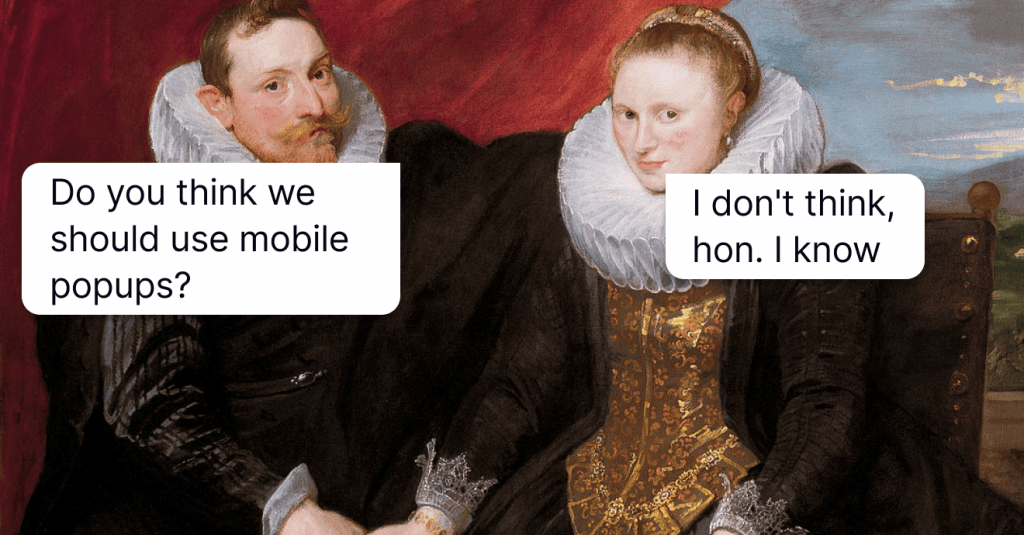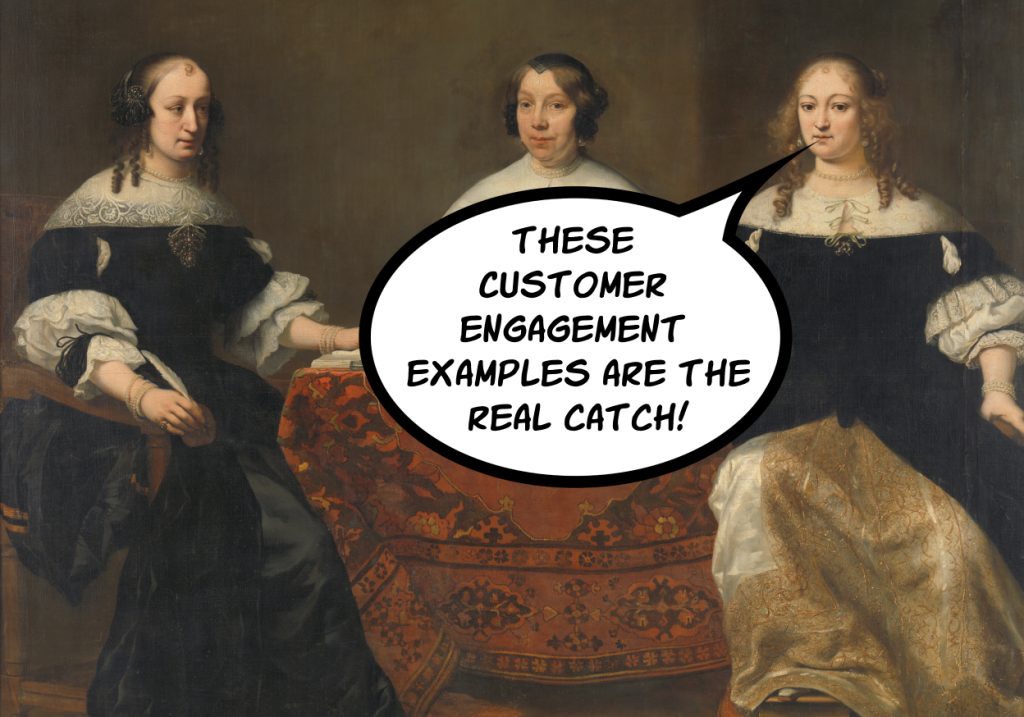Customer Engagement 101: Everything You Ever Wanted to Know
Customer engagement is a never-ending process where you constantly need to test differing theories, try various communication channels, and study your audience and their feedback. We've compiled this extensive guide to help you connect the dots and create the most effective client engagement strategy for your business.
Written by Anastasiia Khlystova

In order to define customer engagement, let’s start with something simpler here and answer another question — what is an engaged customer?
I guess it’s pretty straightforward. An engaged customer is the one that uses your product on a regular basis, employs most of the features, and can leave real feedback on how your product has changed their lives. Or, simply put, they actually USE your product or service. Like, all the time. And they’re so deeply invested in what you offer that changing the vendor would be next to impossible.
While the notion of an engaged customer is pretty obvious, the ways and tactics to achieve and increase this level of involvement can confuse even the most experienced marketers and sales reps. So, where does the whole customer engagement thing stand here?
What is customer engagement?
Customer engagement is interaction between a brand and its customers aimed to motivate the latter to use a product or service more effectively and to build stronger connections. It’s an umbrella term that includes everything from customer service to customer experience to email marketing and more.
A client engagement strategy should revolve around all kinds of communication you can establish with a client in order to teach them how to use your product or service to its fullest capacity.
Think of client engagement as of a never ending conversation where you get to know your customers better and help them achieve their goals by using your product.
Why is customer engagement important?
I feel almost foolish writing this section because it seems like the importance of customer engagement is the most obvious thing in the world. You acquire, you engage, you retain. There’s no way around.

However, I have to remind myself that in too many cases, brands don’t realize the full potential of having a consumer engagement strategy in place. It’s not just about a few onboarding emails and an occasional feedback survey, and it definitely goes way beyond just retention.
There are several benefits of customer engagement:
- Decreased churn. Customers who don’t know how to approach your product and why they need it will leave in a blink of an eye. Engaged customers will stick with you for a long time.
- Increased loyalty. The more loyal customers you have, the more positive reviews and endorsements you can expect. And these things are more valuable than gold as they will be bringing new customers through word of mouth without any effort from your side.
- More cross-sells and upsells. Loyal customers are way more likely to buy from you again and again, upgrade their accounts, and use every single feature your product has.
- Valuable insights from customers. By establishing continuous communication with customers, you can make sure that they will be more eager to share their thoughts and insights with you. In its turn, this will help you prioritize your product growth and marketing campaigns.
It’s all quite simple. Engaged customers are loyal customers. Loyal customers bring even more customers. All of them are more eager to make repeat purchases with you. And all this leads what every business owner dreams of — to more sales and higher revenue.
If by this point customer engagement sounds like a remedy for all business’ problems and issues, that’s because it is. Being able to communicate with your clients and share your vision with them is literally the only way to foster strong connections.
So, now that we’ve sorted out all the why’s, we can move forward to the question of how — how to engage with your customers and which channels to use for it.
Customer engagement channels
The choice of customer engagement tools is so wide that it’s easy to get lost and engage with customers through the wrong media. Or, what’s worse, businesses can get so in over their heads trying to utilize all of the available channels to the point when users feel overwhelmed. The happy middle ground is laying somewhere there, though. So, let’s try to find it.
There are 5 most popular types of customer engagement channels that you use for your business — email, live chat, in-app messages, social media, and push notifications.
A solid customer engagement strategy is always omnichannel, though. And each use case should be approached in a unique way. Your active user base will enjoy in-app notifications and live chat customer service, while emails are the only way to reach less engaged clients. Push notifications can be a savior for mobile apps. And social media will help you build a strong community while also letting you engage with churned users with various ads.
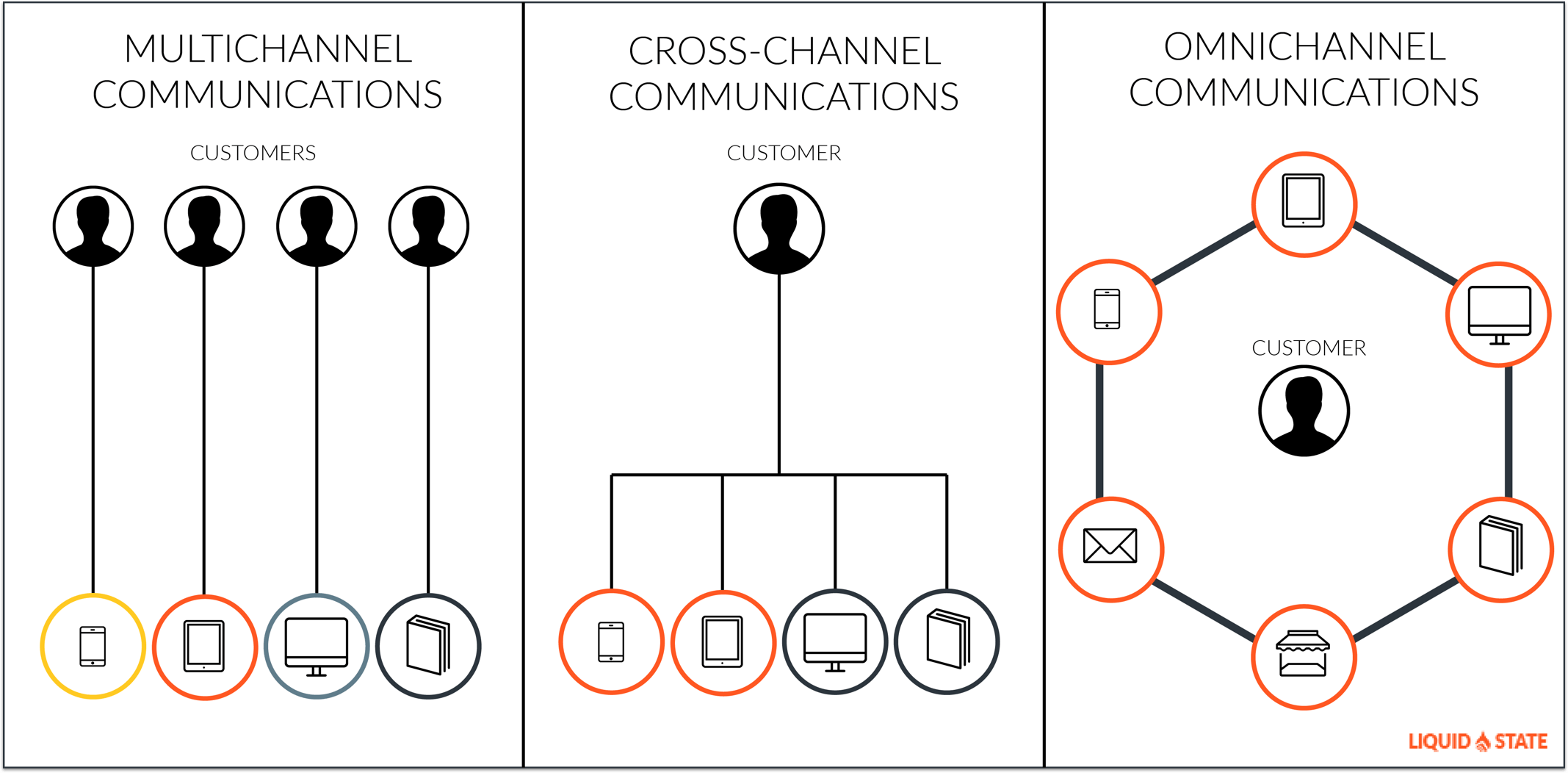
Now, let’s talk about each of these digital customer engagement channels in detail.
– Email marketing for customer engagement
Emails are a golden standard of client engagement. They have one undeniable benefit that any other channel won’t be able to guarantee and that is universal accessibility. Once you’ve secured your customer’s email address, you can reach out to them at any time and be sure that they receive your message.
However, there are downsides to it, too. Emails are always out of context. Over the years, their open and click-through rates have been steadily declining. People can check their inboxes once a day or once a week, and your great message will be lost among hundreds of similar messages from other companies trying to increase their customer engagement just like you.
– Live chat for customer engagement
These days, messengers are a preferred communication channel in our everyday lives. So, there’s no wonder that live chat became a preferred way to get in touch with businesses for a quick real-time talk and timely help. One of the greatest advantages of this channel is that you can increase your client engagement by sending proactive chat invitations to website visitors or targeted messages to active users on your own initiative.
– In-app notifications for customer engagement
There’s no better way to boost client engagement than to talk with clients exactly when they’re using your product. Even though it might seem that those people are already engaged enough, the ‘if it ain’t broke, don’t fix it’ principle doesn’t work here at all. On one hand, they always want to know more about your product — its advanced features and hidden gems. Moreover, these people have tons of insights that they can share with you. And the best way to connect with them is to send timely and personalized in-app messages.
– Social media for customer engagement
Social media are probably the most convenient channel to show the goofy informal side of your business. Post relevant content, track your mentions and engage with the audience, create polls and contests and, generally, be in touch with your audience. Everybody’s using social media, so why not try to try and engage with them there.
By learning about your audience, replying to their messages, and showing your brand personality, you can successfully establish a connection with your community and encourage them to interact with your brand.
Socialbakers
– Push notifications for customer engagement
It’s a common belief that push notifications can be irritating and even infuriating. In fact, 60% of users turn off push notifications whenever possible. That being said, it’s still a primary way to increase customer engagement for mobile devices. Which is why we can’t throw them under the bus just yet. A rare well-timed and non-intrusive push can do wonders if it contains worthwhile information or a useful tip.
Customer engagement strategy
There’s no one-size-fits-all consumer engagement strategy that any business can just adopt and call it a day. The success of a company depends on how well they know their target audience, their goals, needs, and expectations.
Therefore, there are three must-have components of any client engagement strategy — segmentation, personalization, relevancy.
There’s no chance to engage a person without even one of the three and I’ll tell you why. You can’t personalize your message and tailor it to customers’ needs unless you study your customers’ data and behavior and segment accordingly. And, how on earth can you write something relevant if you don’t know whom you’re going to target?
So let’s see what each of these customer engagement cornerstones means and how to approach them.
– Segmentation
Every client engagement process starts with finding out relevant segmentation patterns and using them to divide your target audience to more granular groups with specific needs. Market segmentation creates subsets of a market based on demographics, needs, priorities, common interests, and other psychographic or behavioral criteria used to better understand the target audience.
Companies can find out this information by surveying your existing customers as well as by studying behavioral data with the help of tools like Hotjar or Fullstory. Customer communication tools like HelpCrunch also gather this information and transfer it right to the dashboard where you can use it for sending chat and email messages to your customers.
There are several traditional ways to segment your audience which are divided by primary characteristics you want to target:
- Demographic characteristics like age, gender, education, occupation
- Geographic characteristics like countries, cities or even districts
- Behavioral characteristics like product usage, user path, purchase history.
- Psychographic characteristics like personal traits, tastes, opinions, interests, values
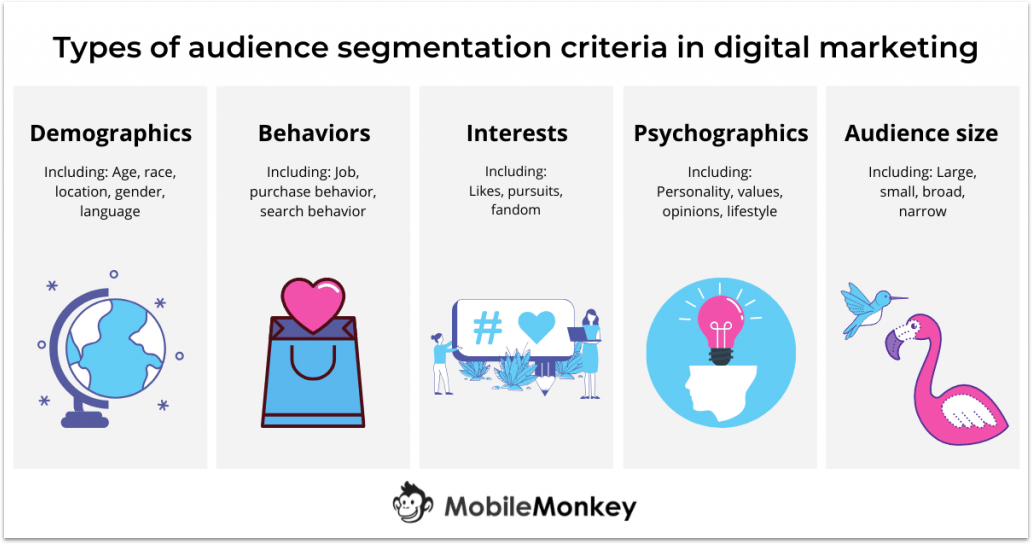
In order to achieve great results with your targeting, you should be able to mix these characteristics like an experienced bartender. Start with dividing your audience by the level of their engagement — e.g. engaged, premium, trial users, inactive, canceled, etc. From there, you can segment those groups by their preferred language and time zones. Finally, you can go even more granular by targeting users based on how they’ve interacted with your previous messages.
– Personalization
A well delivered segmentation is the first step to true personalization. When you know everything about your customers — their tastes, opinions, occupation, behavior — it should be easy to tailor your message around those facts and make it feel really personal.
However, there are two fundamental questions that any product marketer should be able to answer to build an effective customer engagement process:
- What are customers’ primary goals with your product?
- How do they use your product?
Once you’ve answered those two fundamental questions, you will be able to build a customer engagement strategy based on certain milestones you want customers to pass in order to achieve their goals — from activation to using advanced functionality. Personalize your message for each step based on different levels of engagement and craft your message around it.
– Relevancy
Let’s say you’ve divided your customers into relevant segments and came up with the way to deliver personalized experiences to each of them. Now is the time to write a chain of personalized messages that will bring the most benefit to its receivers.
No matter which customer engagement channel you choose, you should always create your messages as short and to the point as possible. Live chats, in-app messages, or push notifications require only 1-2 sentences, while emails give more room for creativity.
I won’t tell you how you should write nice and interesting content, find your voice, and stay polite (which you absolutely should). The most important rule here is to always concentrate on the benefits your customers can get by using your product, not its features. Whether it’s an automated onboarding email or a one-off feature announcement, you can’t talk about your product. Tell users what’s in it for them, and you’ll see your customer engagement will skyrocket immediately.
Let’s say you want to gather customer feedback in order to prioritize your product development. Surely, you can just send them a survey with a generic ‘share your feedback’ capture. However, if you take a moment and explain how exactly you’re going to use this information, customers will be more likely to share it with you. They’ll know that at the end of the day, you’re doing this for them.
Customer engagement examples
As I’ve mentioned shortly before, customer engagement should happen across various channels simultaneously. First, you send an email to welcome and onboard new users, then you engage with them via in-app notifications warming up their interest. Once you spend some time together and feel comfortable enough, try to collect customer feedback to see where you can improve further.
There’s the other side of the coin. Bombarding your clients with irrelevant messages from every corner won’t do any good, too. Choose a few strategic places you want to engage with your customers and write a personalized targeted relevant message.
I’ve selected the following three customer engagement examples that will give you a general impression of what it’s all about:
– Welcome email
Every company should have a friendly welcome message of some kind. It’s crucial to confirm that a customer has signed up successfully and tell them what to do next to achieve the first results right away. Remember that it can be either the beginning of a beautiful friendship or the end of all further communication.
For instance, here’s a short welcome email from Trustpilot. In a few words and three simple steps, it tells you exactly what you should do to collect reviews for your product and achieve your goals.

– Targeted chat message
Targeted chat messages are like in-app notifications in a sense that you can integrate your live chat software with your product and reach out to your customers proactively. They’re great for announcing new features and company news to your active user base. People will receive a nice short message and can answer it right away in the same chat window.
Here’s an example of a targeted message sent by HelpCrunch right before their big interface update. It’s a nice way to give a quick heads-up to active users so that everyone’s prepared for the big change.
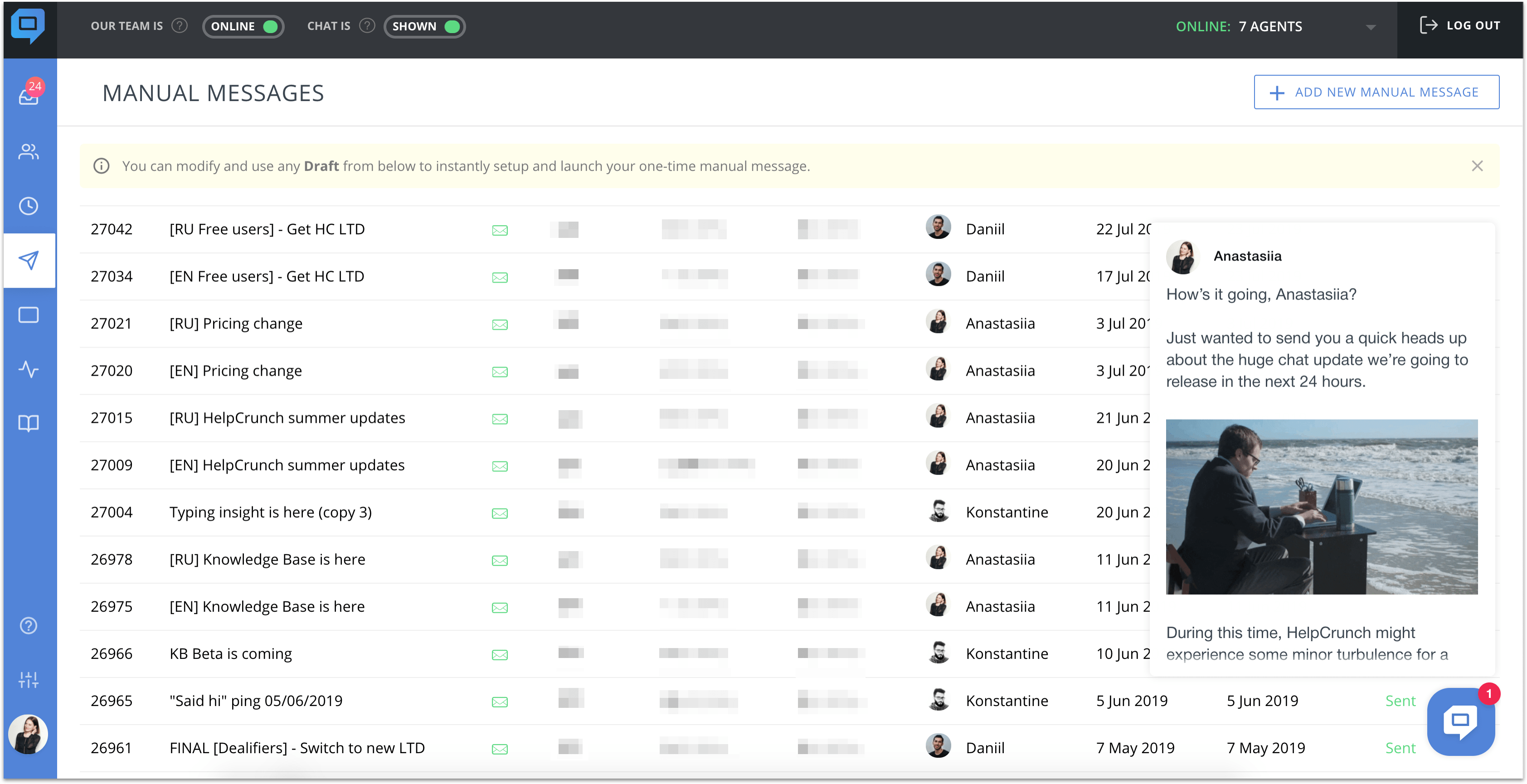
– In-app feedback survey
If you can only collect feedback from your active customers, it only makes sense to engage with them while they’re using your product. Which makes in-app surveys quite an important part of a customer engagement strategy. However, it’s always better to duplicate your request via email, too — in case they’re too busy to fill it in right away.
Customer.io, an email automation platform, hit the nail on the head with their short and clear Net Promoter Score survey. It takes a couple of seconds to rate your experience with the tool right when you’re using it without interrupting your work process.

Final words on improving customer engagement
Customer engagement is a complex process requiring vast resources and great dedication. You need to choose the right channels to communicate with users effectively, segment the audience to deliver relevant and personalized experience to every single person while constantly collecting feedback to stay on top of things.
That’s why it’s important to choose the right customer engagement platform that will cover all the channels and accommodate necessary information for precise targeting. Study your audience and engage with it on a regular basis to be sure that you retain everyone you can and learn valuable lessons from those who churned.



